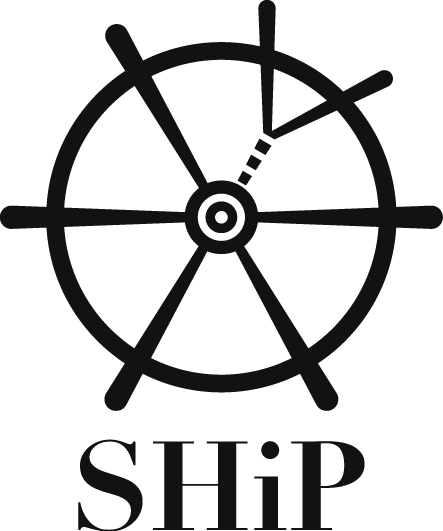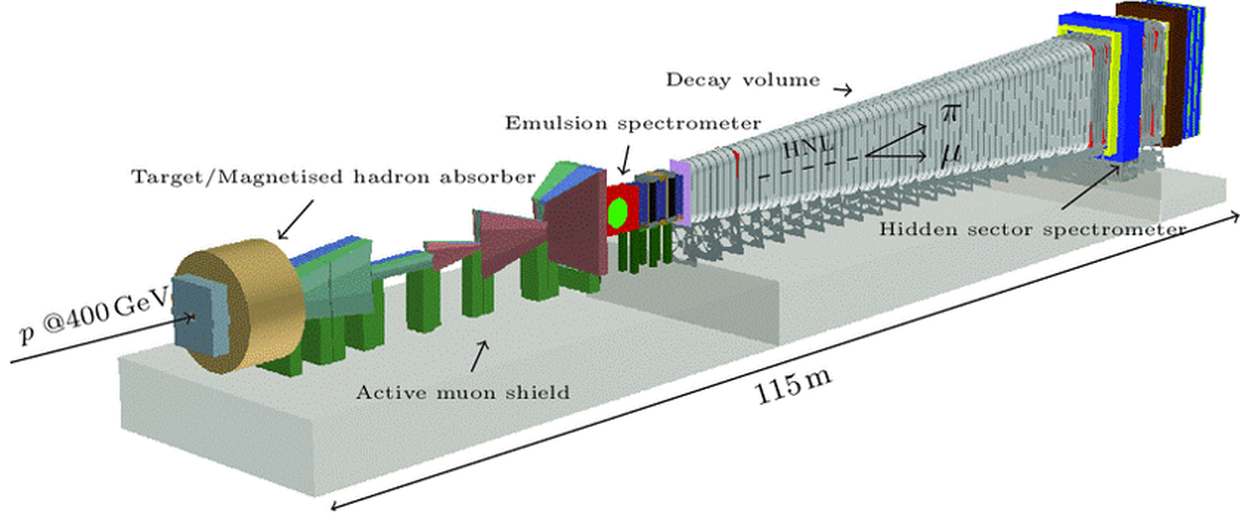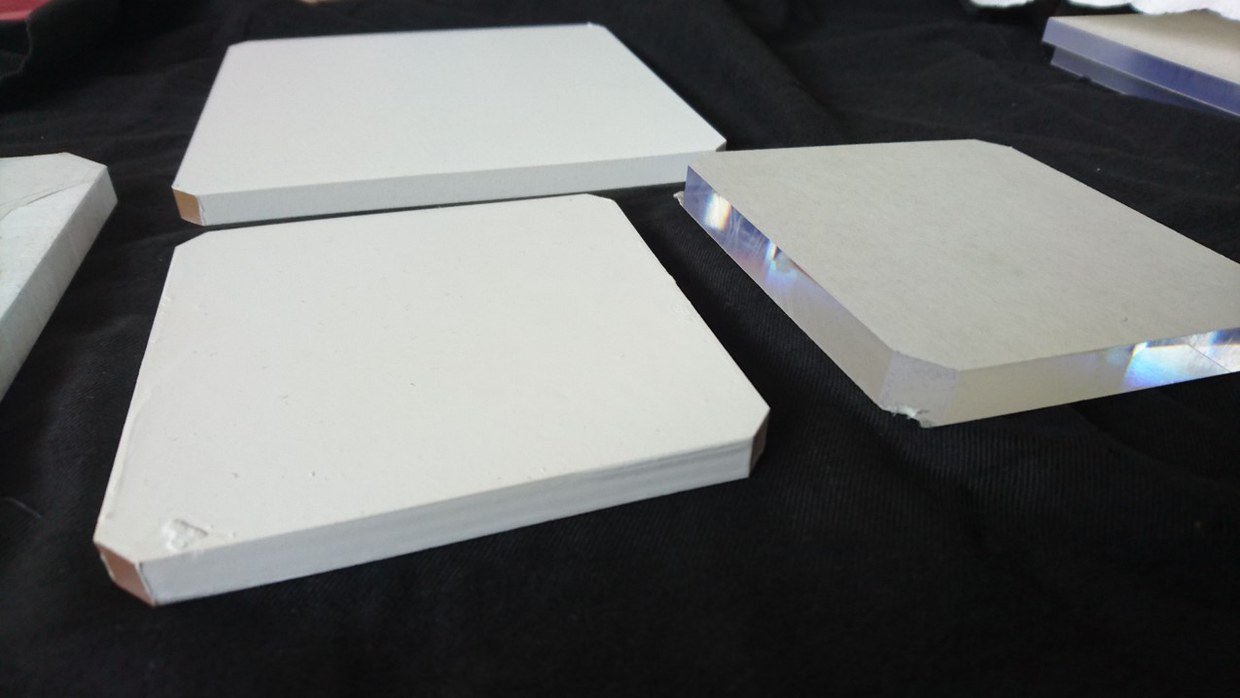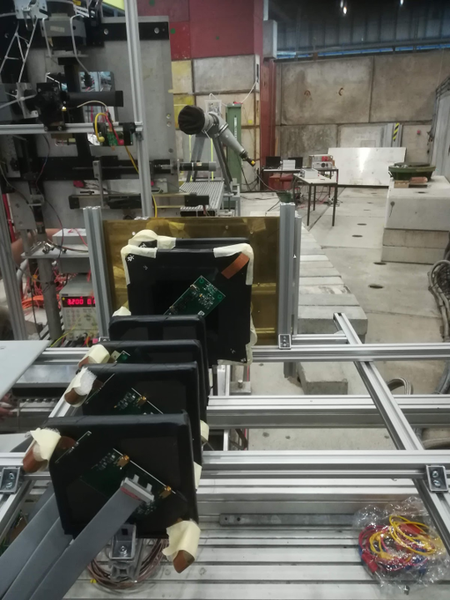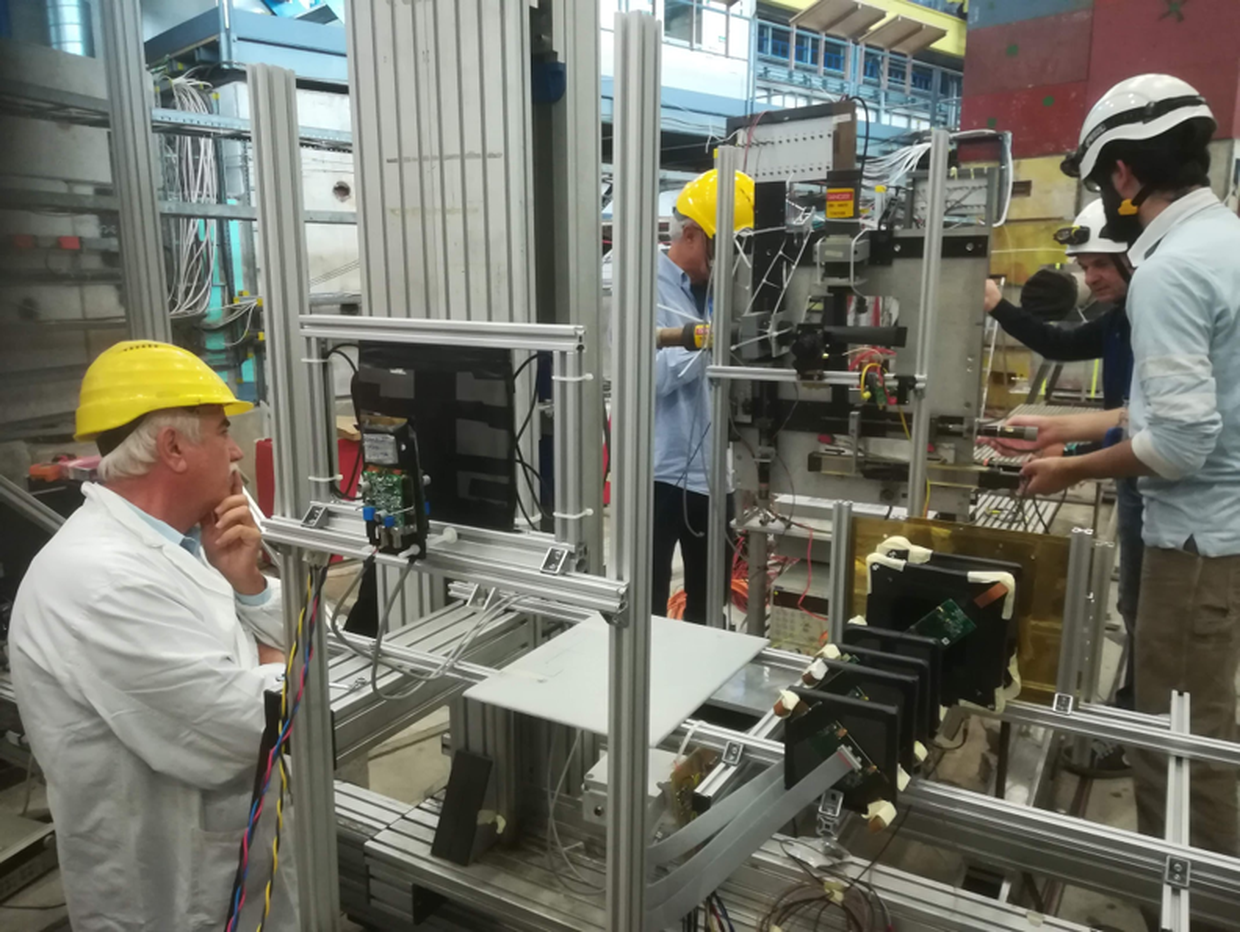The Search for Hidden Particles (SHiP) experiment has been proposed for construction at the Beam Dump Facility at CERN SPS, starting 2025. SHiP is aimed at searching for very weakly interacting long lived particles, which have been proposed by several theories beyond the Standard Model. It will look heavy neutral leptons, photons and dark PNGB produced in the decays of D mesons.
SHiP is a fixed target experiment composed of two complementary detector systems placed behind a shielding system that suppresses most Standard Model particles.
The first is the Scattering and Neutrino detector, based on Tungsten-emulsion bricks and scintillating fiber, dedicated to the study of τ neutrinos and the search for Light Dark Matter interactions. This is followed by a 50m long vacuum decay volume surrounded by liquid scintillator. The final part of the vacuum vessel holds the spectrometer tracker. Downstream of the vessel are a timing detector, a 'SplitCal‘ calorimeter, with improved photon directionality and electron/hadron separation performance and a fast muon detector.
The combination of active and passive shielding, accurate tracking and extensive set of background tagging systems is expected to make SHiP a zero-background experiment with unprecedented sensitivity.
The SHiP collaboration is composed by over 300 scientists from across the world. The SHiP group in Bologna is responsible for the design, simulation, construction and characterization of the downstream muon detector, based on fast plastic scintillator tiles with Silicon Photomultiplier readout.
We can propose thesis topics for Masters and PhD students tailored to individual preference, choosing from simulation and prototyping of detector elements, readout electronics design, test-beams and data analysis.
